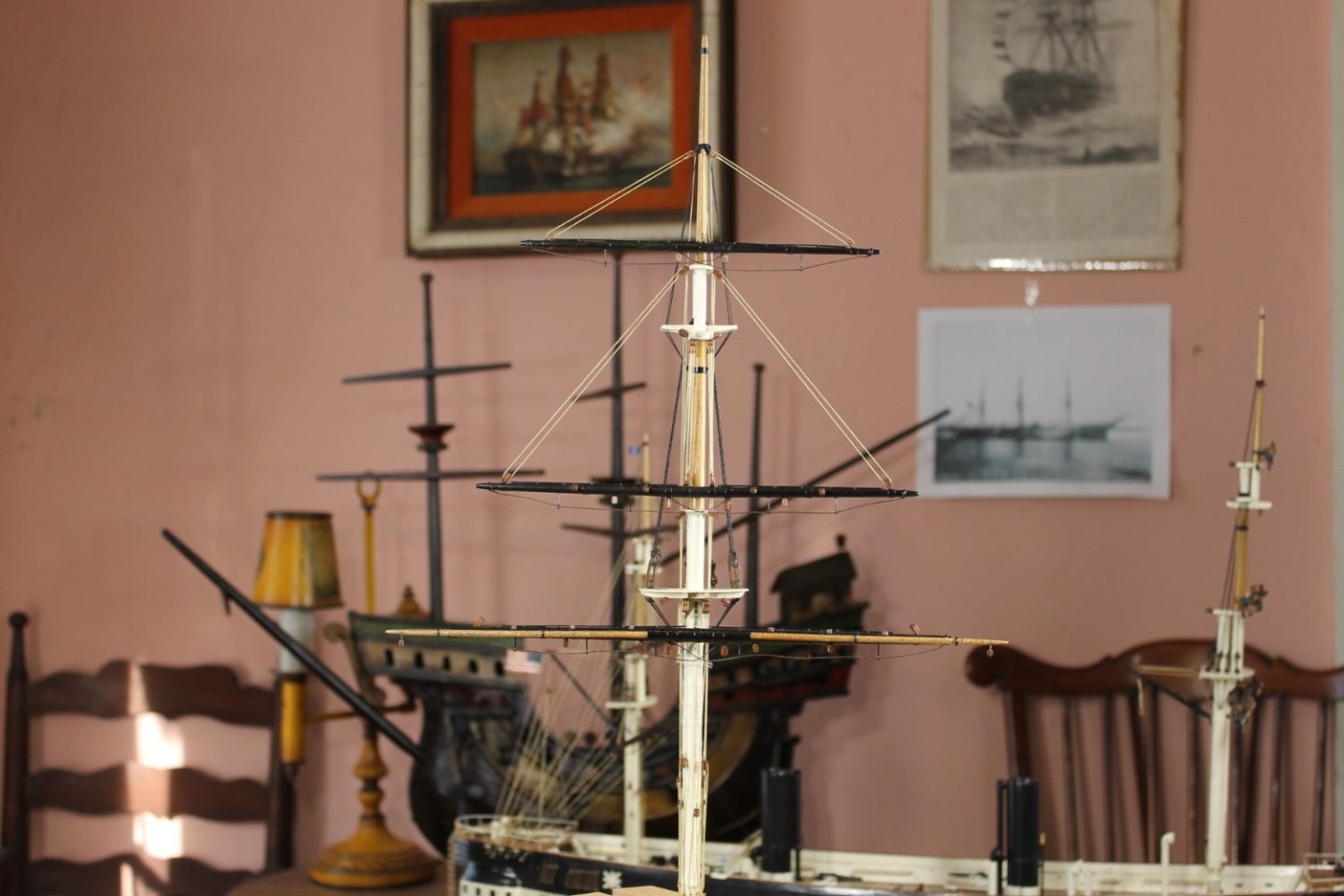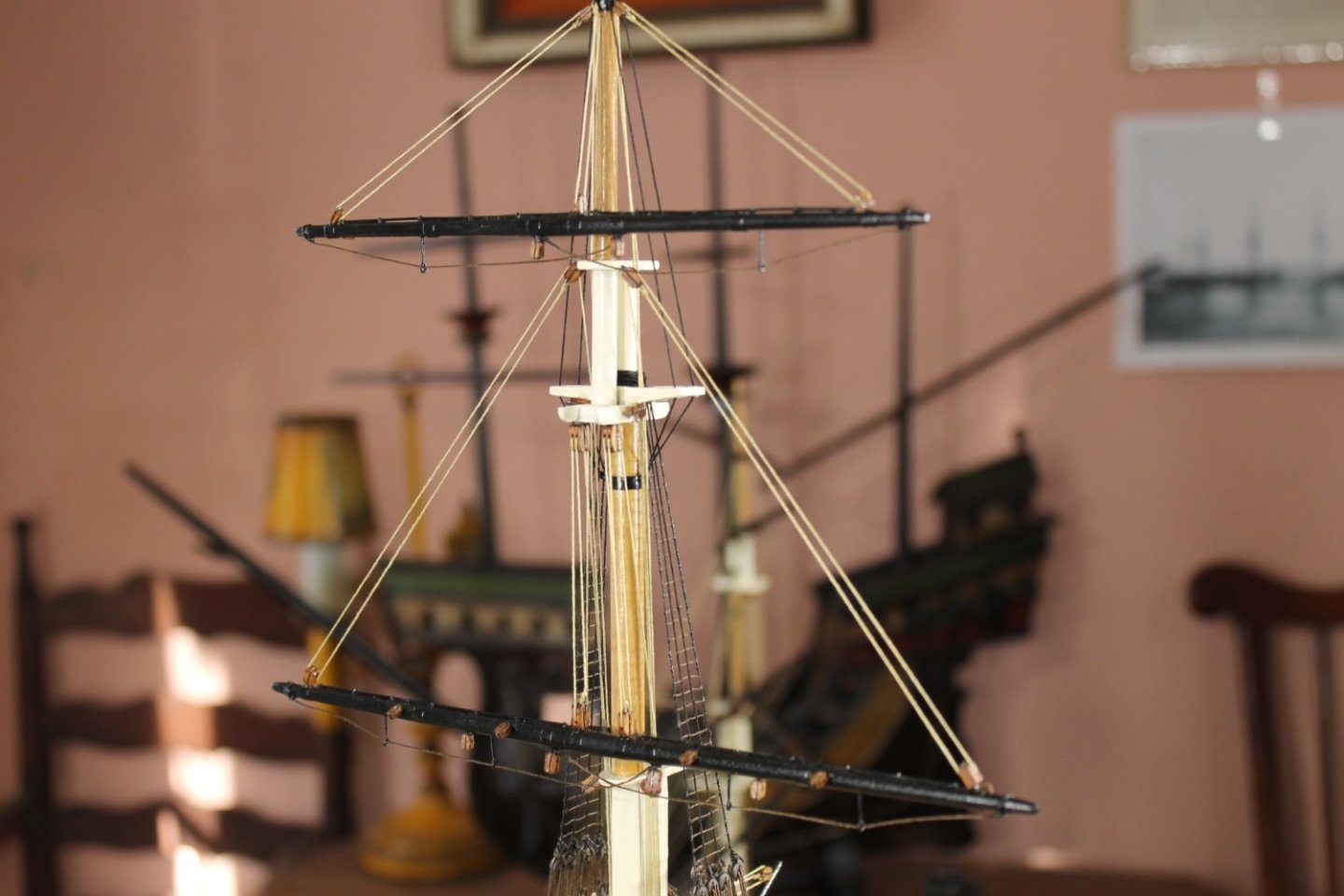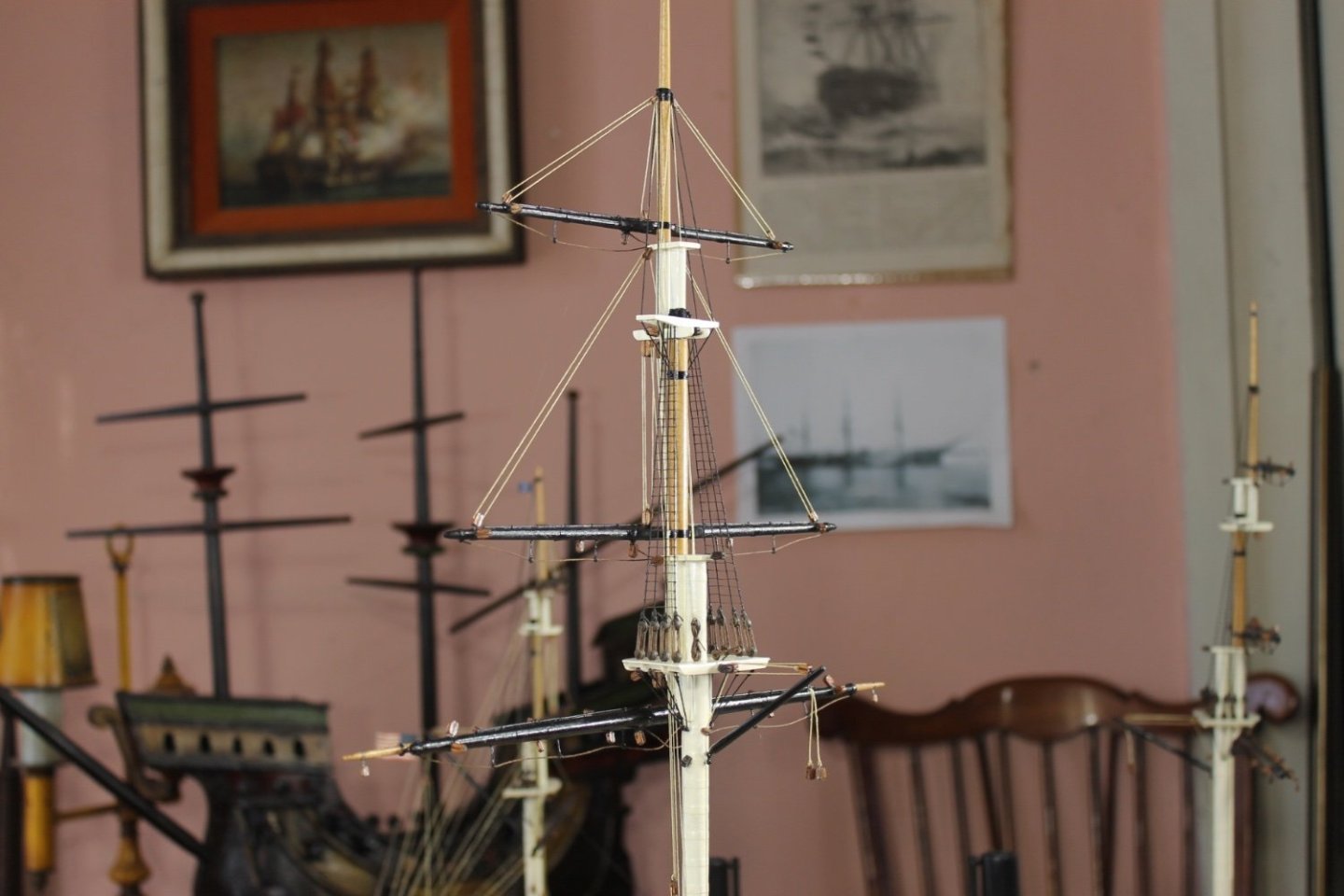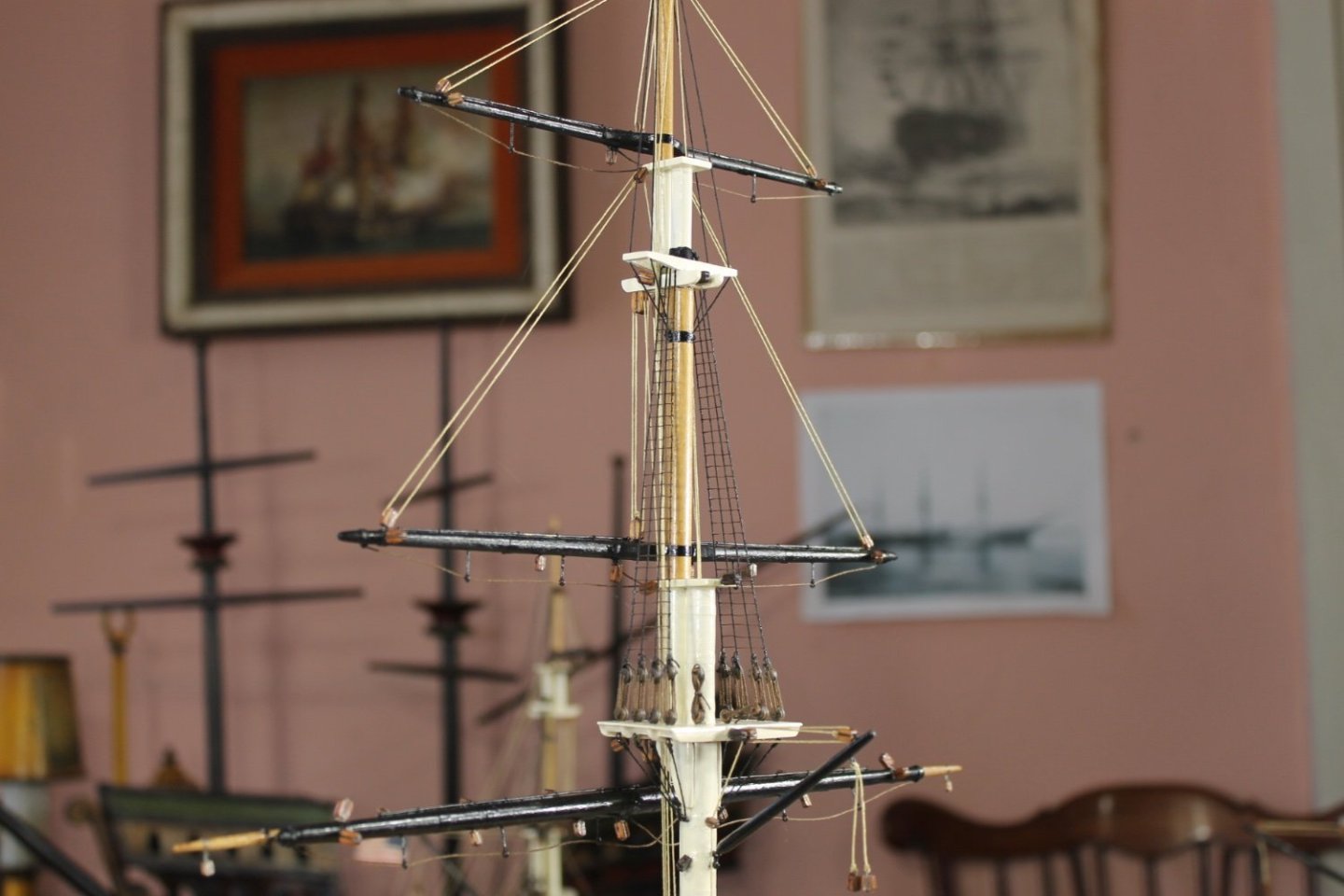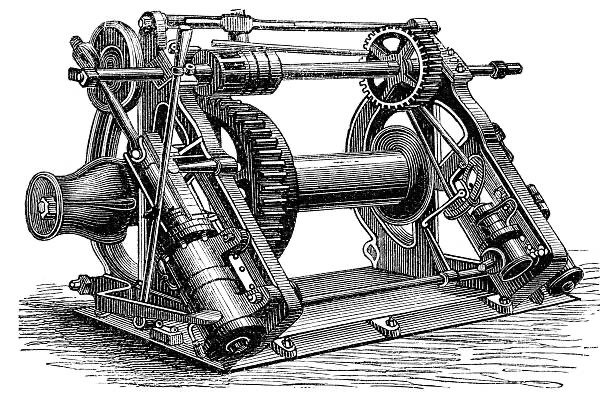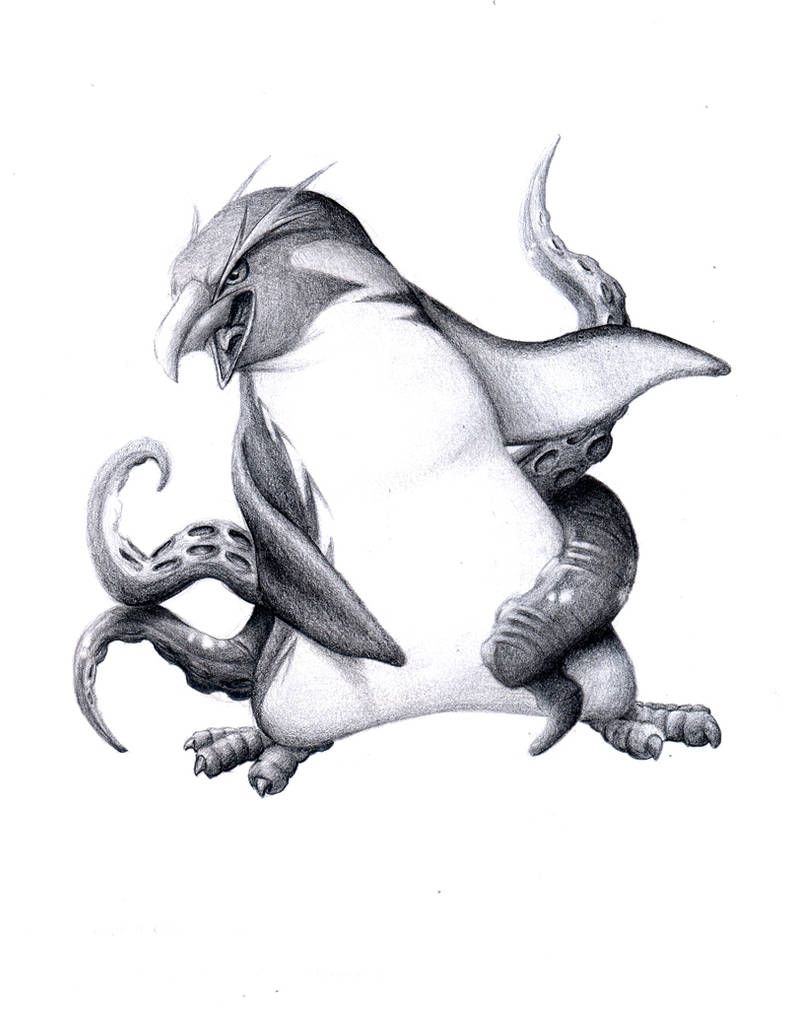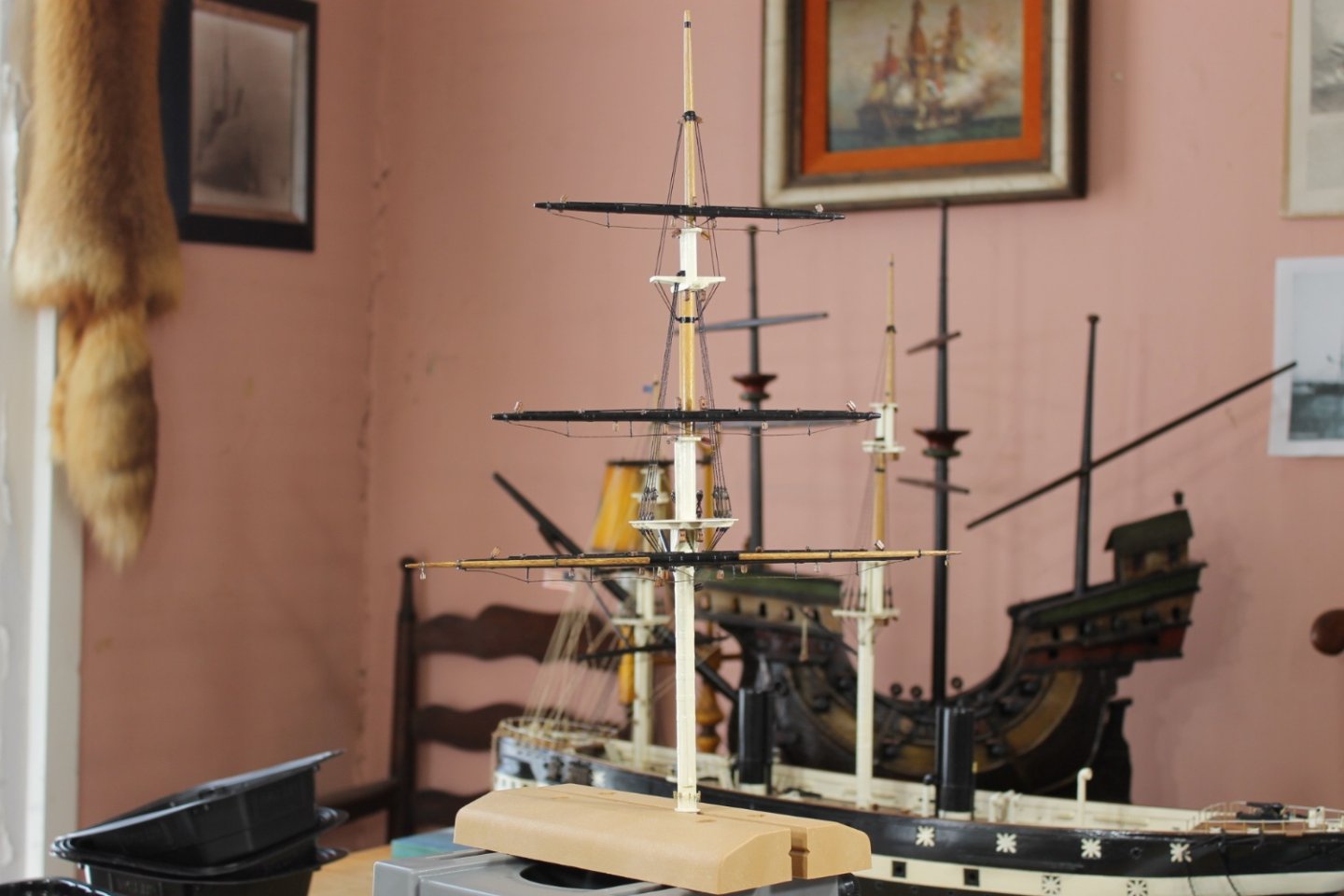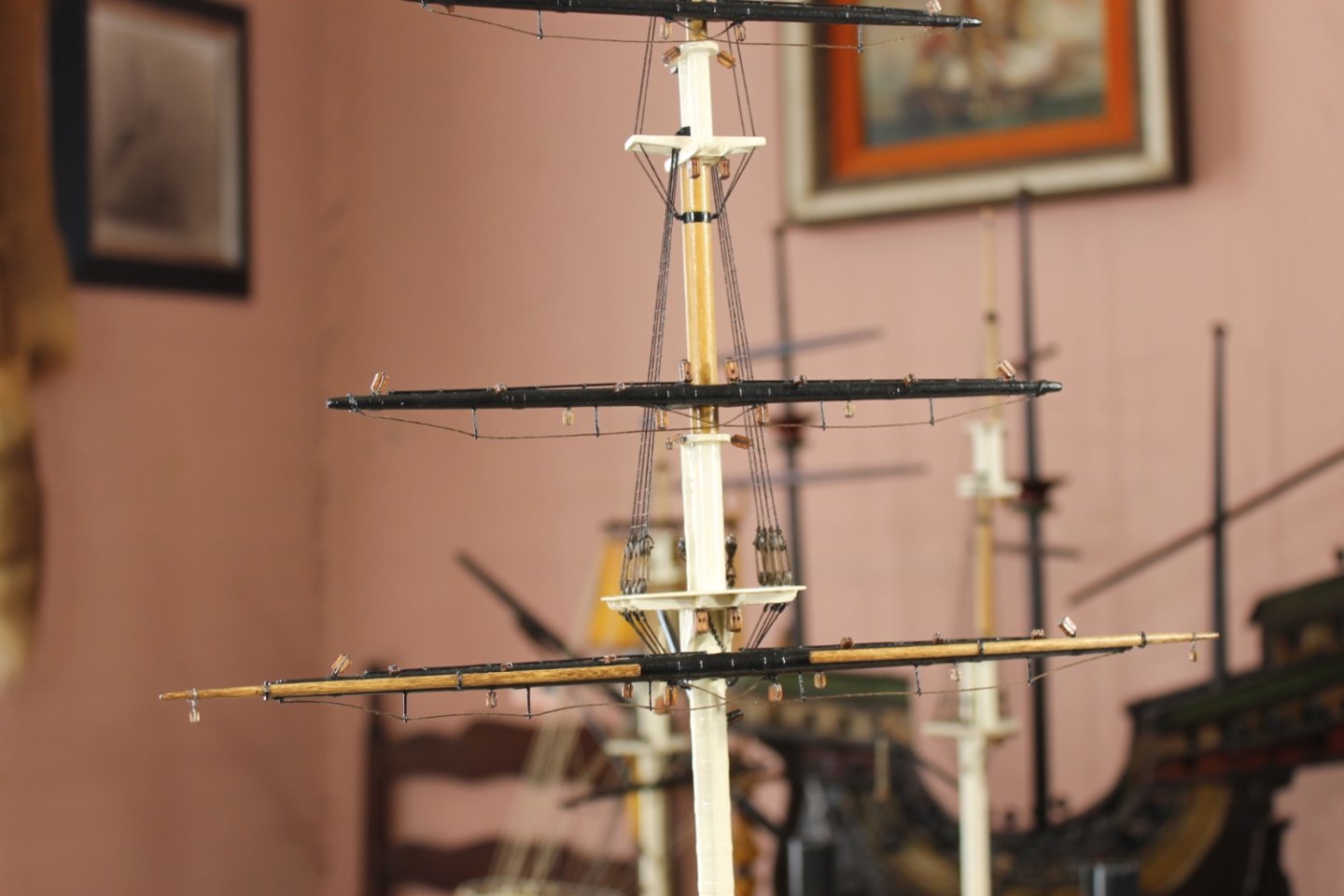-
Posts
6,603 -
Joined
-
Last visited
Content Type
Profiles
Forums
Gallery
Events
Everything posted by Keith Black
-
Bob, Glen, Pat, Rob, Gary, Tom, Brian, and Keith thank you for your kind comments and thank you to all for the likes. I've completed all the off ship work I can do on the mainmast. The top and top gallant lifts are rigged but the braces have to wait till the mast is installed. Also, the main yard doesn't get permanently mounted till the mainmast is installed and the channel stays deadeyes are rigged. Once the foremast top and top gallant lifts are rigged and the foremast installed the Tennessee's rigging will speed up considerably. The lines from the blocks to the spider pins are temporary and are there only to keep the blocks from becoming a tangled mess. Thank you to all for following along and for your continued support. And the journey continues.......
-
Joe, welcome to MSW. Glad to have you aboard.
-
Denis, welcome to MSW. I love steam power. Glad to have you aboard.
-

Hello from Canada’s west coast
Keith Black replied to Twokidsnosleep's topic in New member Introductions
Great builds, Scott. -
Michael, welcome to MSW. Fantastic model. Glad to have you aboard.
-
A man five feet, six inches tall in shoes or boots wouldn't have to lower his head. That's a fair amount of headroom. Thanks, Siggi.
-
I don't believe I've mentioned the word "penguin" this entire build. Besides, a penguin would look funny with tentacles unless you........
-
Keith and Gary thank you for your comments and thank you to all for the likes. I managed to get the Mizzen ready to rig with passable results by shear beginners luck. With a little experience the Main went okay but I still had issues with the deadeyes not being as level as i would like them to be. For whatever reason the top deadeyes dropped in height ever so slightly as I worked my way from fore to aft. When I got to the Foremast I thought, I 'got this'. What a misguided thought that was as the modeling gods had other ideas. The Fore fought me till the bitter end. I lash both deadeye pairs before glueing them in their respective holes and then attach the shroud lines. It seemed like on ever pair I'd get glue on a bottom lashing line and had to fight to get the lashings pulled tight to secure the tail to the shroud. The port side shroud anchor eye pulled free when i was performing that relatively simple task. But I did manage to get the deadeyes level so in the end I had a small victory. The Fore is ready to be rigged. Before I can get giddy pulling line I need to strop and set the blocks around Main and Fore. I also have to finalize where to set the tie off eyes for both booms which isn't a big deal, it just needs to be done before the mast are set in place. Thank you to all for stopping by and thank you for your continued support.
-
Keith, somehow I missed this build when you started it in June of 2021. I've just gone through the log a couple of times and it's coming along quite nicely and I look forward to looking over your shoulder till the finish. Interestingly enough just a couple of days ago I listened to an interview with Mensun Bound on NPR's Science Friday. The link is below and well worth listening to. https://www.sciencefriday.com/segments/shackleton-endurance-beneath-the-ice-book/
-
Roman, welcome to MSW. Glad to have you aboard.
-
Przemek, welcome to MSW. Lovely model. Glad to have you aboard.
About us
Modelshipworld - Advancing Ship Modeling through Research
SSL Secured
Your security is important for us so this Website is SSL-Secured
NRG Mailing Address
Nautical Research Guild
237 South Lincoln Street
Westmont IL, 60559-1917
Model Ship World ® and the MSW logo are Registered Trademarks, and belong to the Nautical Research Guild (United States Patent and Trademark Office: No. 6,929,264 & No. 6,929,274, registered Dec. 20, 2022)
Helpful Links
About the NRG
If you enjoy building ship models that are historically accurate as well as beautiful, then The Nautical Research Guild (NRG) is just right for you.
The Guild is a non-profit educational organization whose mission is to “Advance Ship Modeling Through Research”. We provide support to our members in their efforts to raise the quality of their model ships.
The Nautical Research Guild has published our world-renowned quarterly magazine, The Nautical Research Journal, since 1955. The pages of the Journal are full of articles by accomplished ship modelers who show you how they create those exquisite details on their models, and by maritime historians who show you the correct details to build. The Journal is available in both print and digital editions. Go to the NRG web site (www.thenrg.org) to download a complimentary digital copy of the Journal. The NRG also publishes plan sets, books and compilations of back issues of the Journal and the former Ships in Scale and Model Ship Builder magazines.


